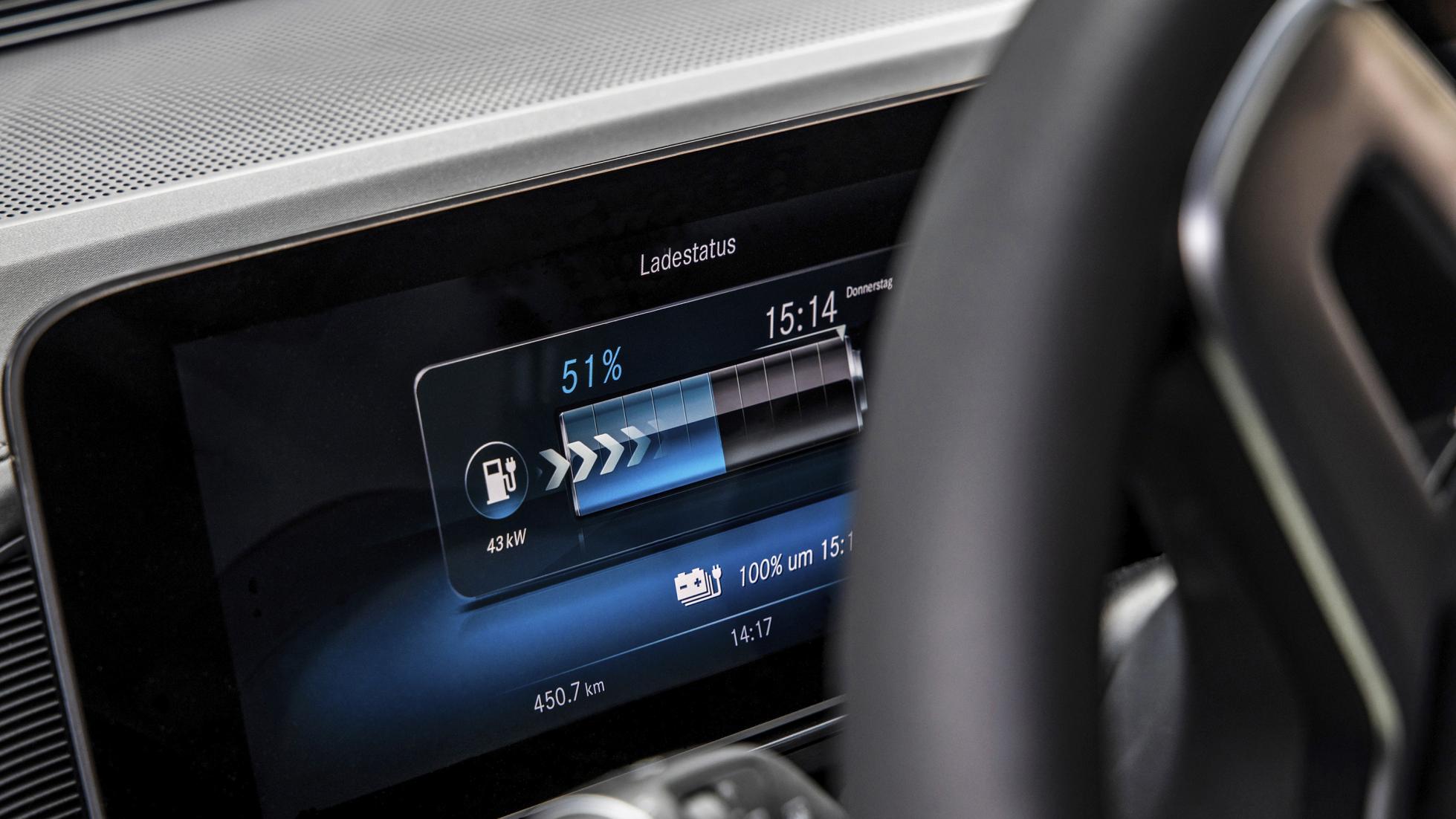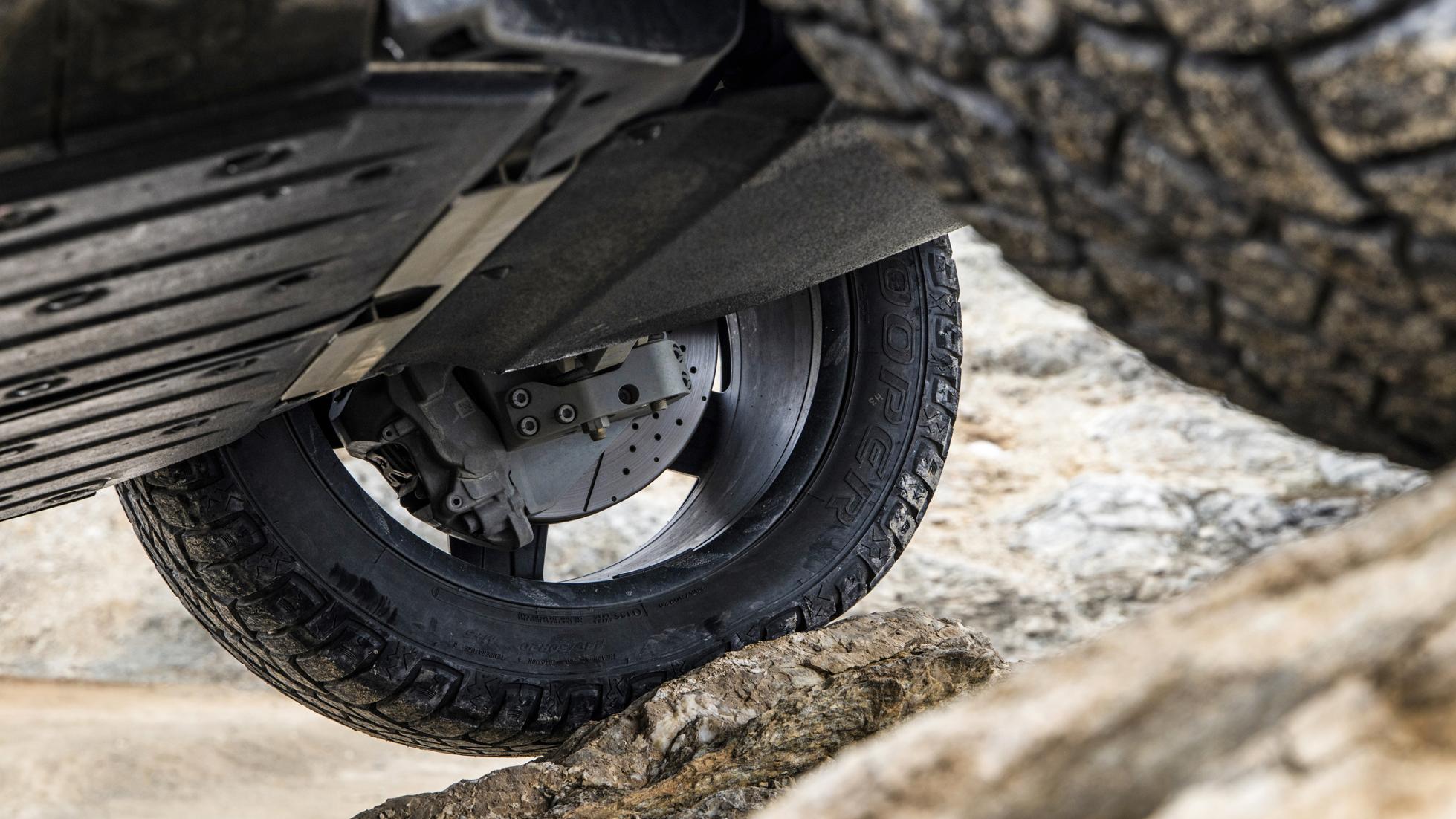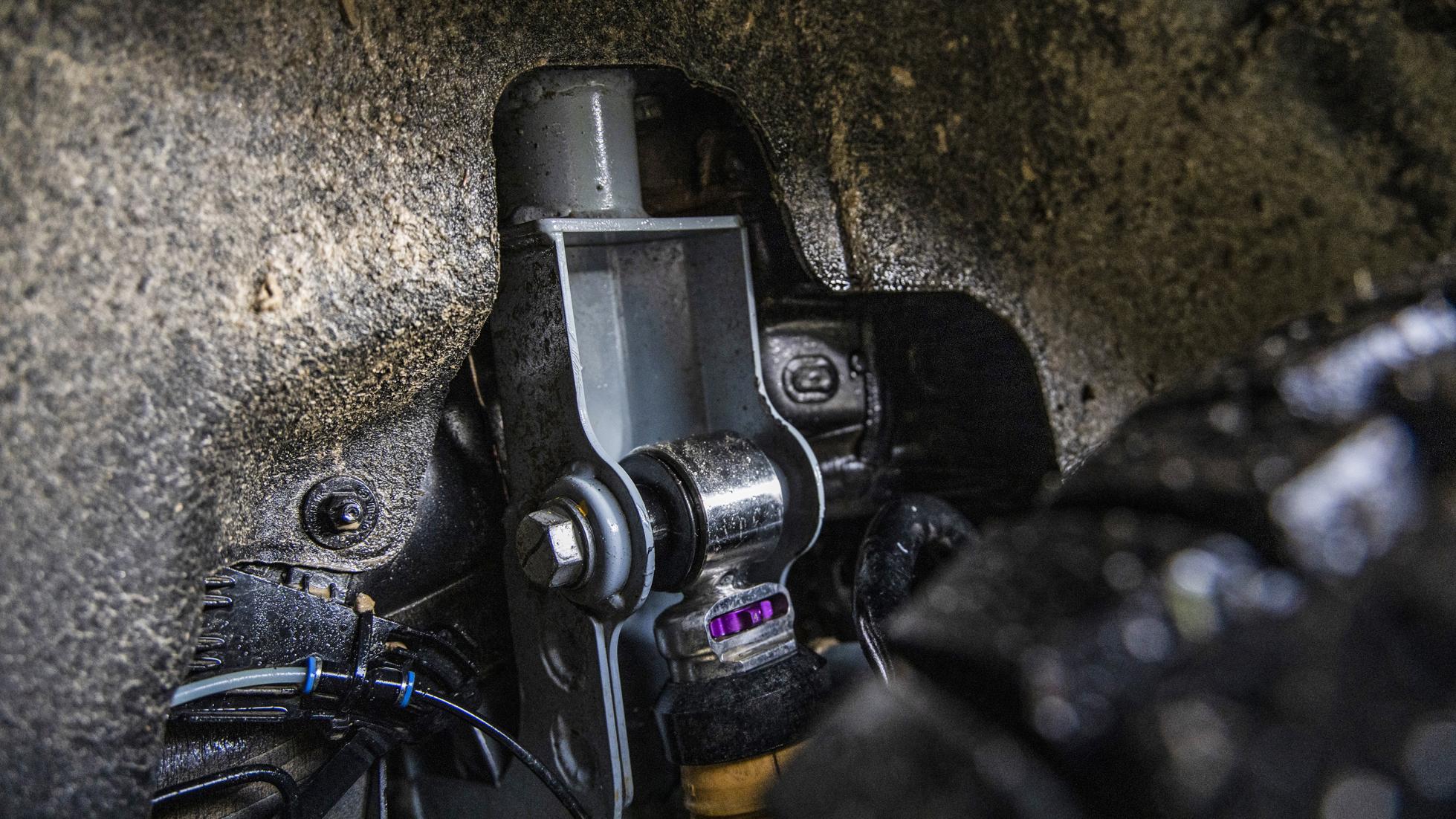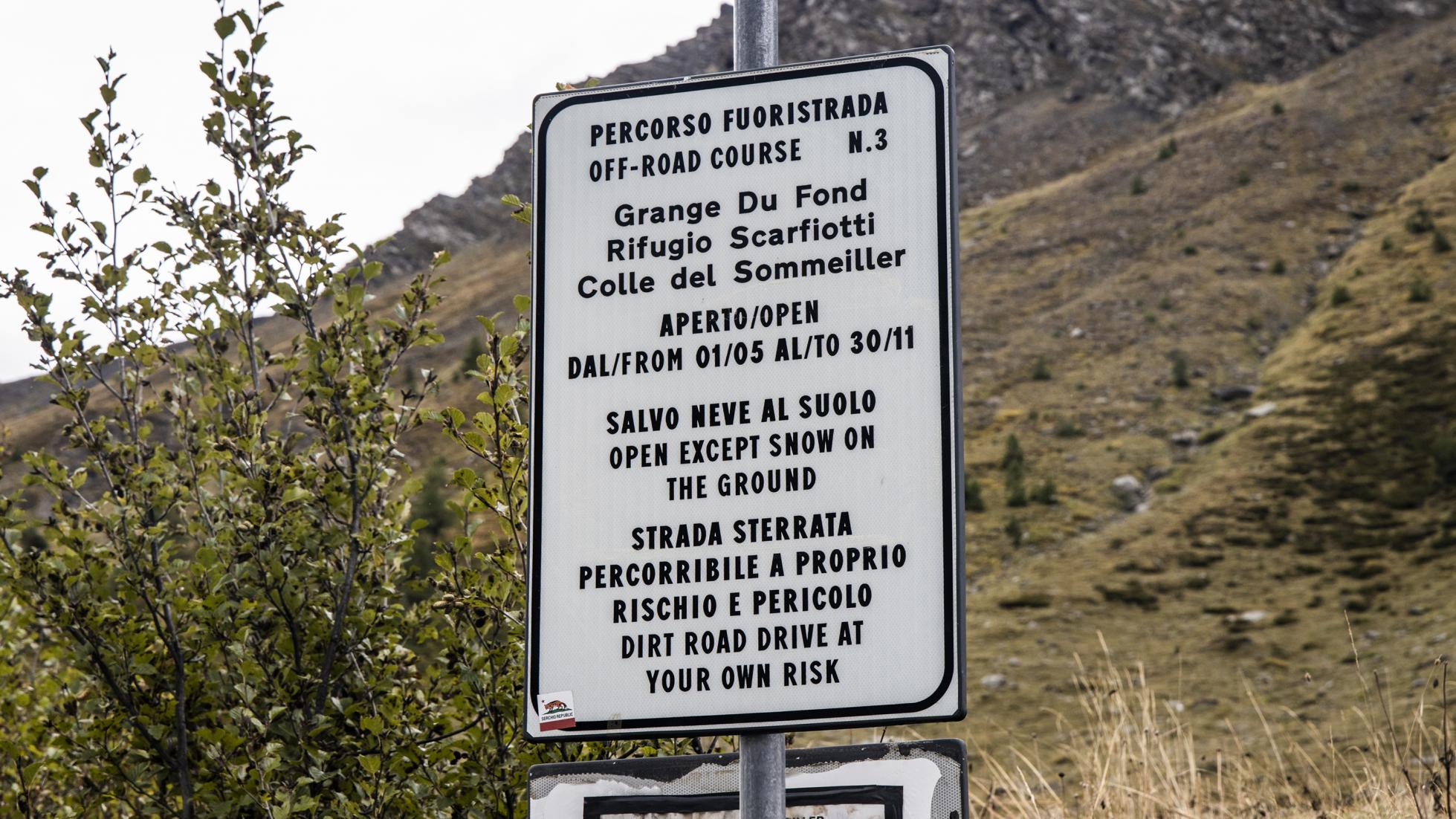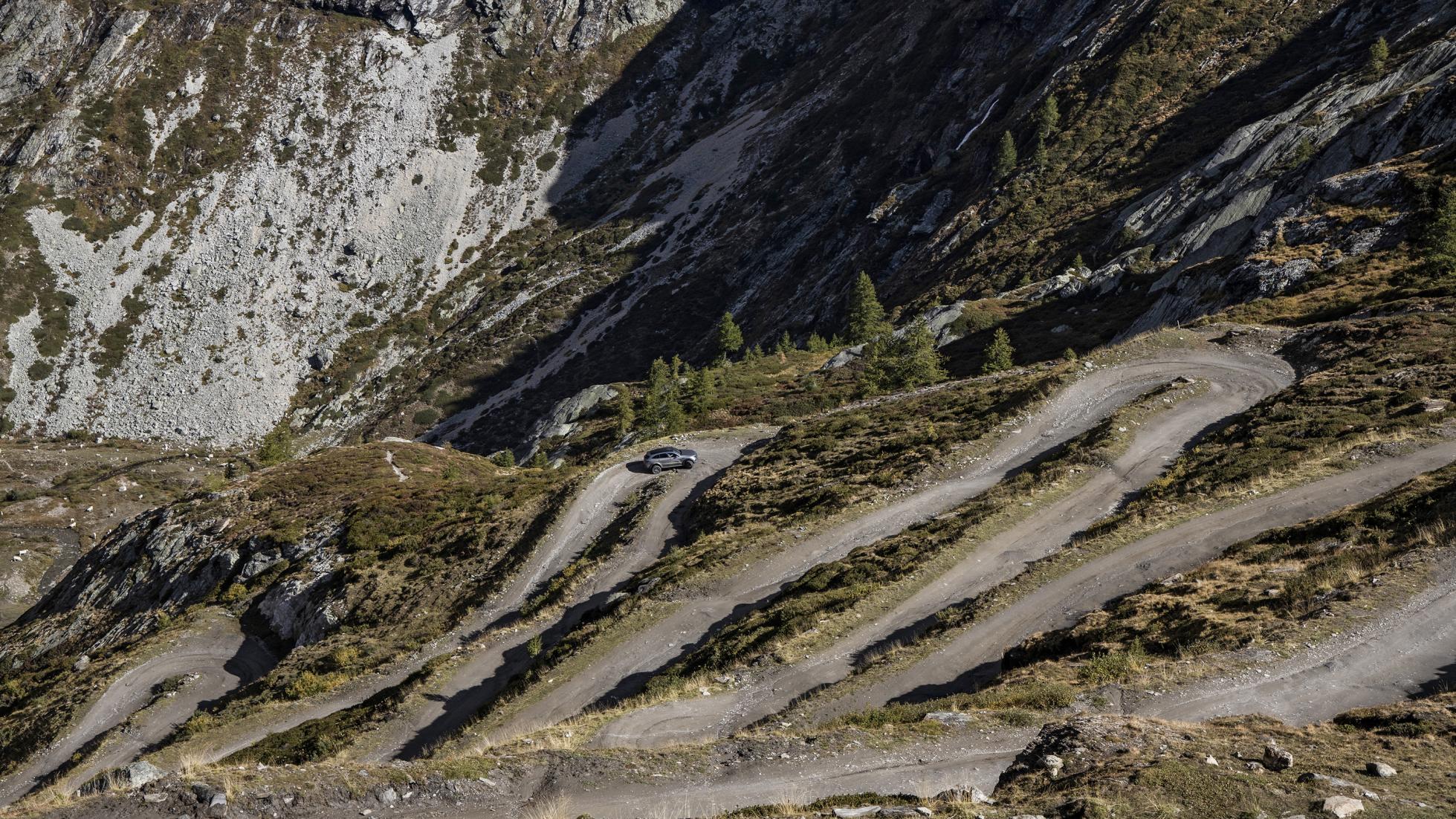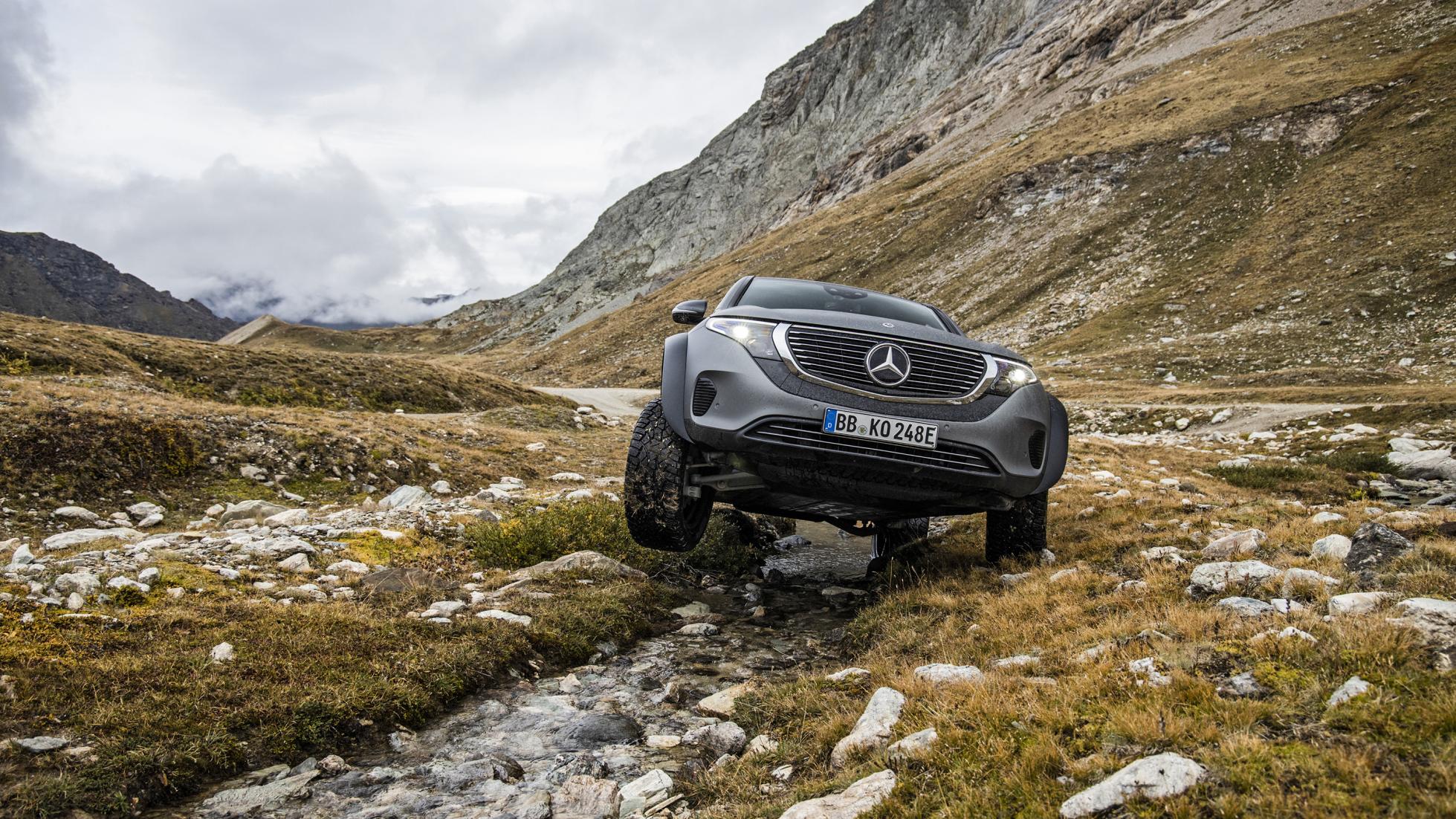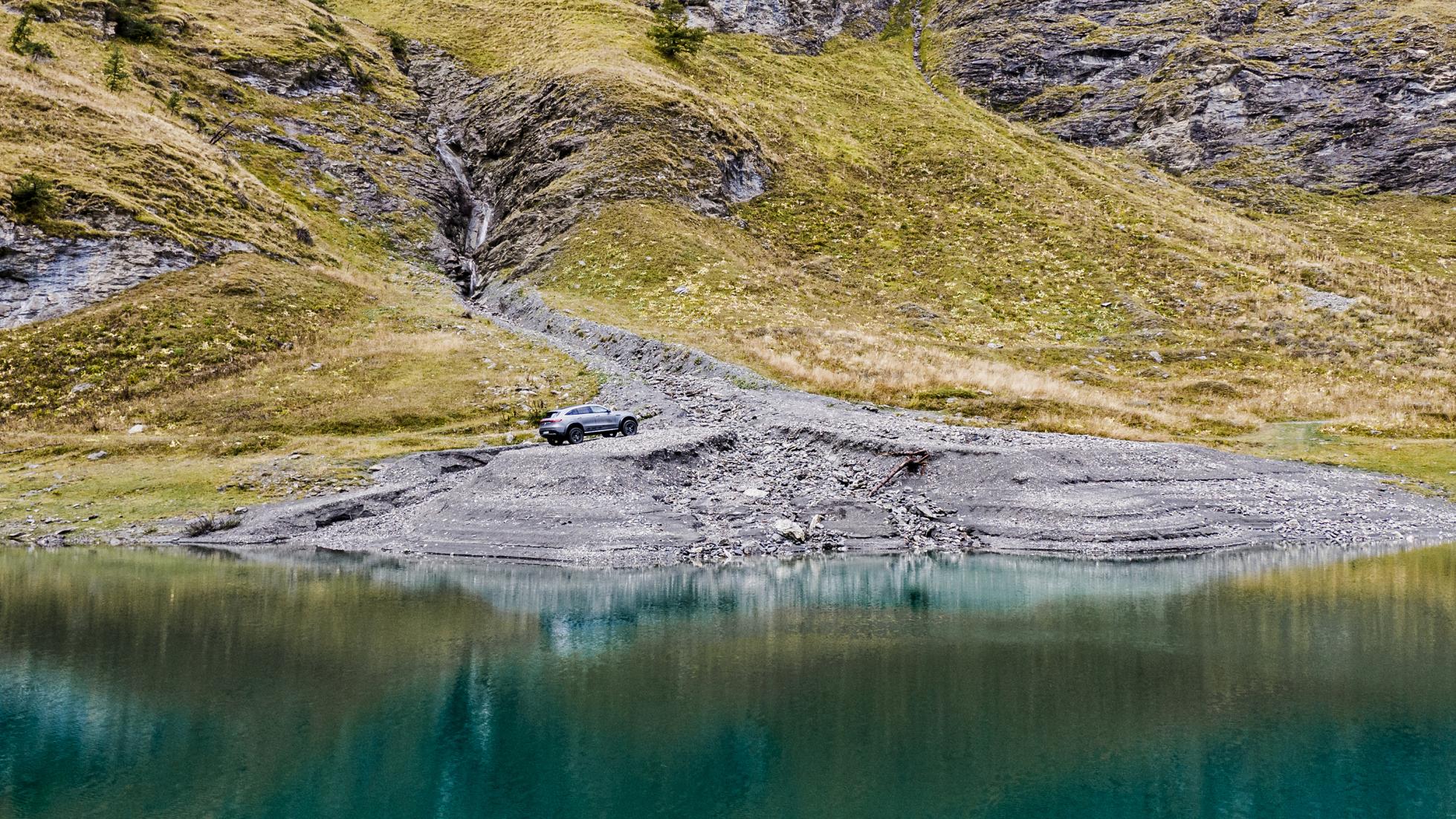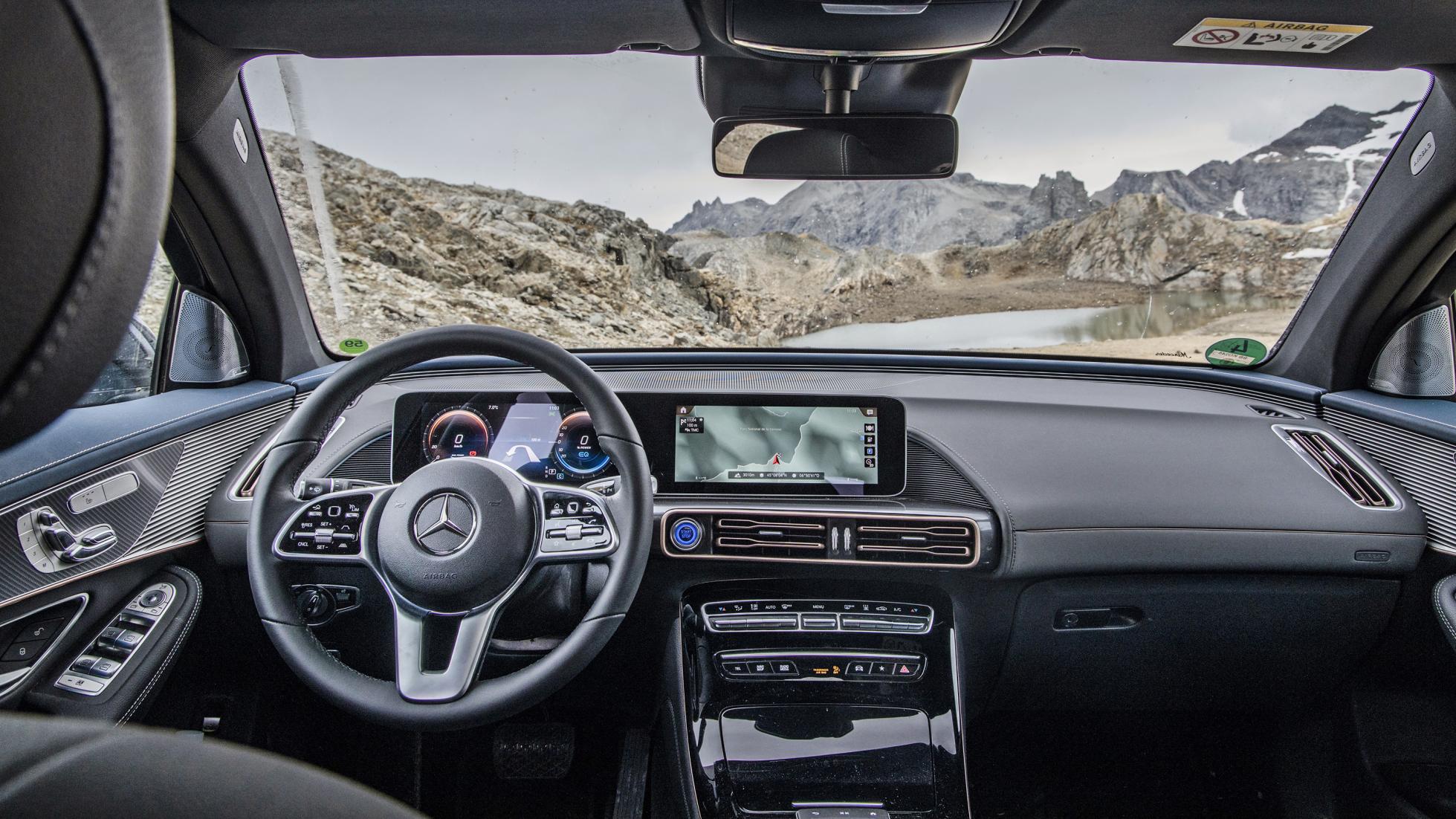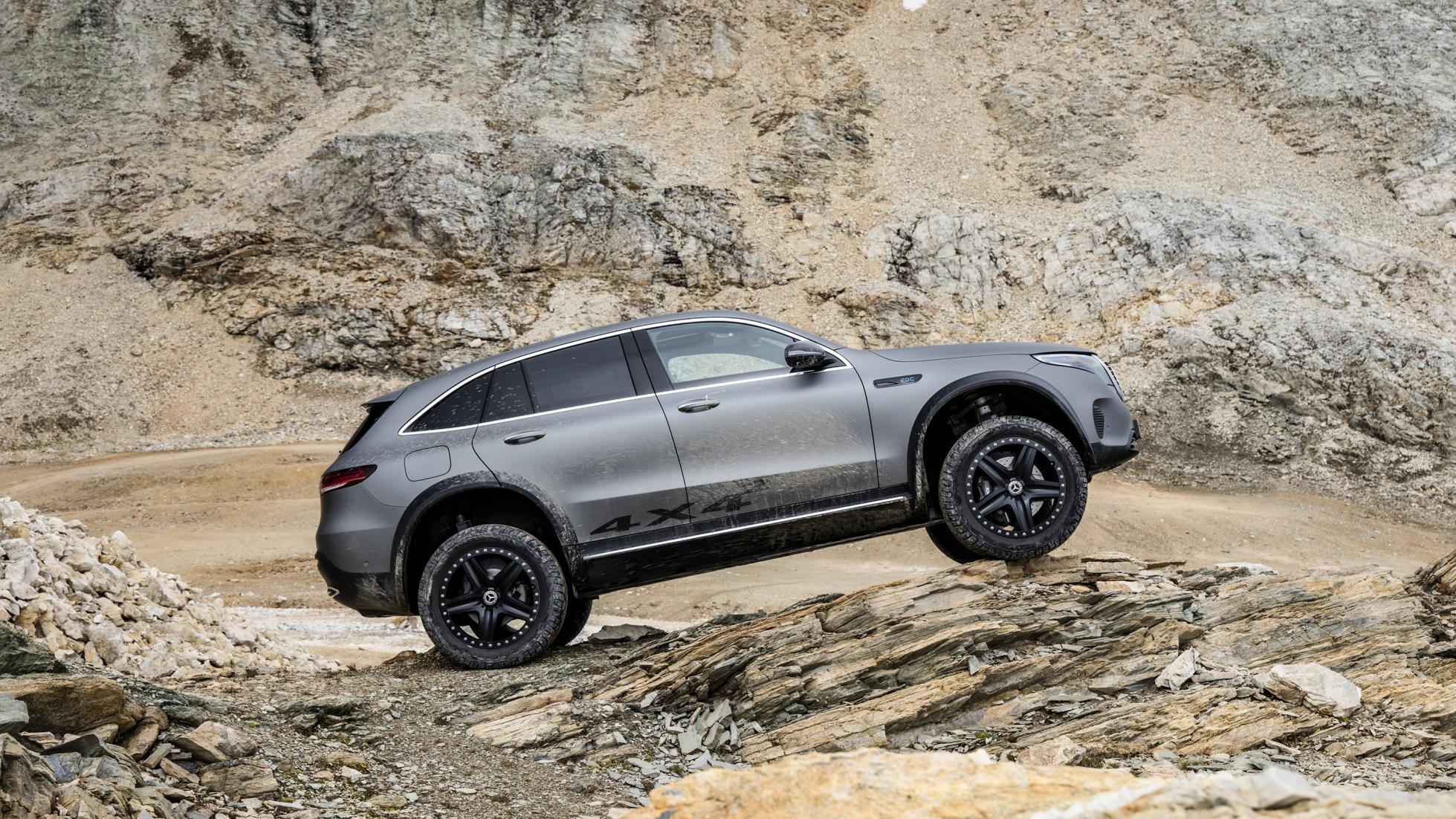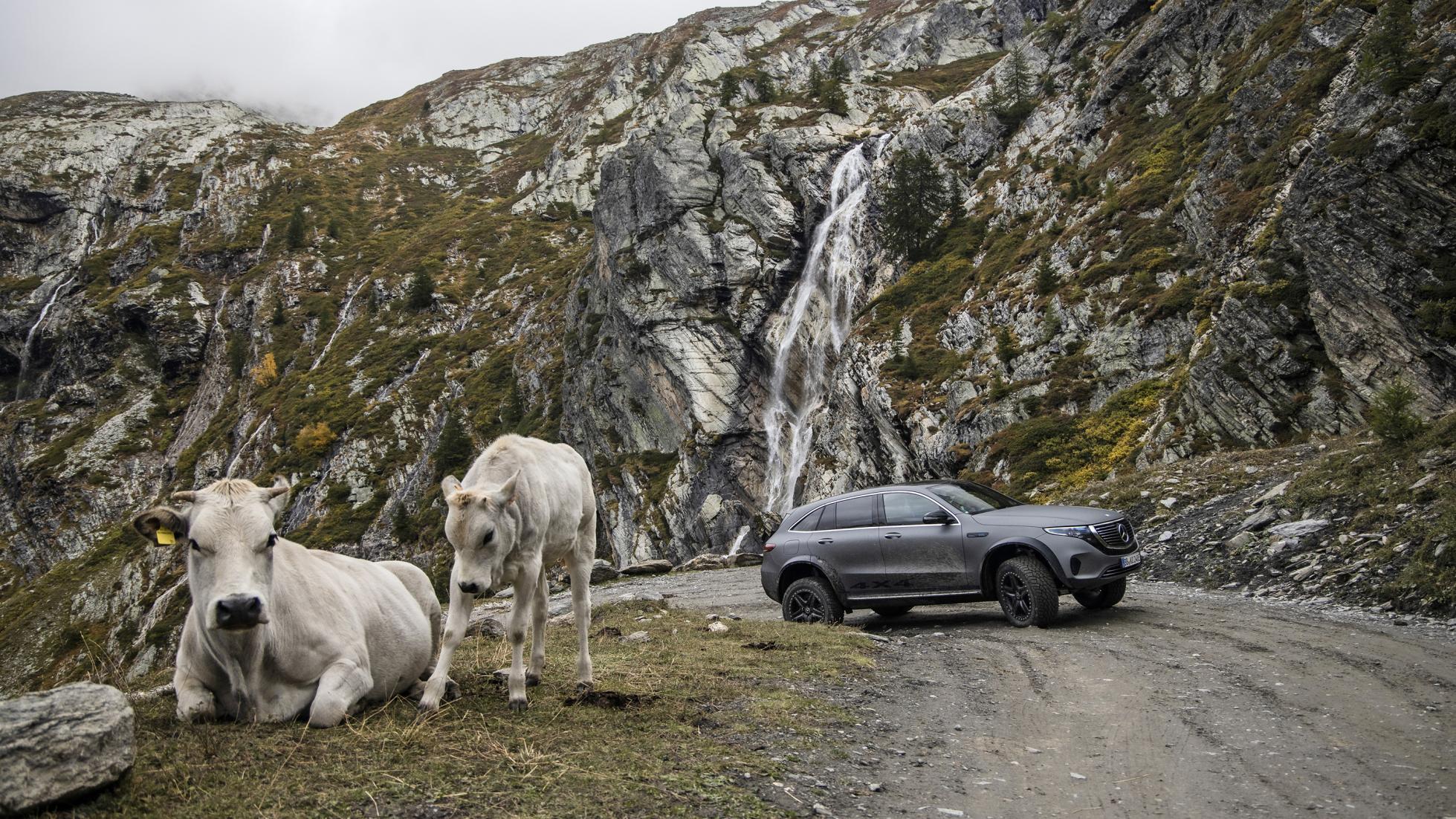Adventuring in the mad Mercedes EQC 4x4²
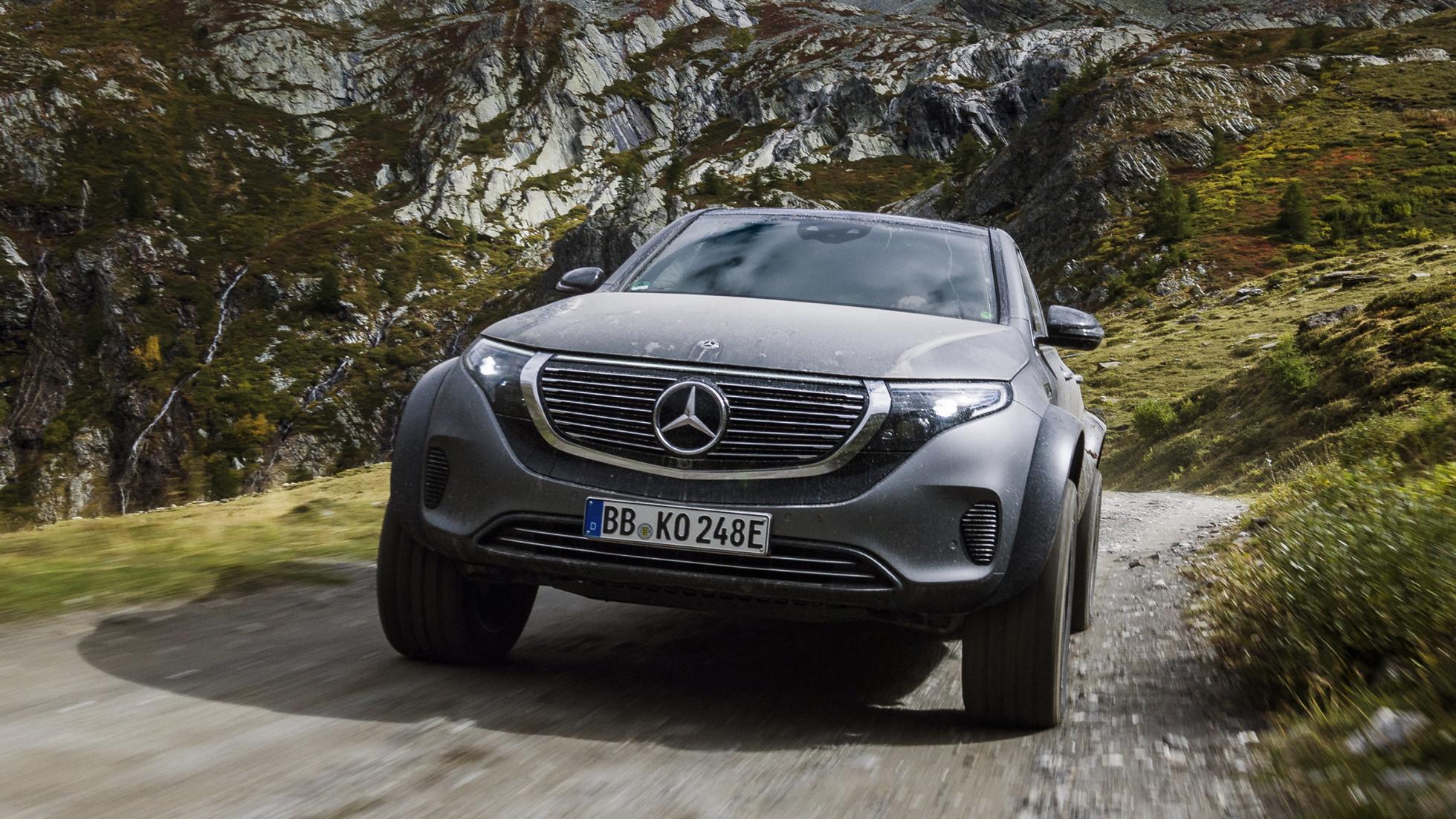
We lost the trees a few miles and about a thousand metres ago, the tough, battle weary grass losing its quiet war with the terrain not long after. Now it’s just lichen and rocks, the top of this mountain a bare tooth in the jaw of the world, biting into the clouds. Those clouds are dragged low, wreathing the view in soft crowns of fluff, blurring the edges of the landscape.
This far up there are no birds, and the shy marmots we saw earlier – podgy little mountaineering beavers that they are – don’t bother with these elevations, mainly because there’s nothing to eat but gravel, and you can’t survive winter on the fat of pretty vistas.
It’s quiet. And it remains so as I crawl the car up past the official ‘top’ of the Col de Sommeiller at 2,993 metres (9,819ft) above sea level, and drive it up what can only be described as a convenient hump through a gap in the fence. It is at this point that we breach the magic 3,000m (just under 10,000ft), and become a legend in our own lunchtime: we have just driven up the highest drivable pass in Europe. And we’ve done it in a pure electric car.
There is an element of overkill here, to be honest. Although the Col is high, you can drive it in any kind of competent 4x4, and I pretty much brought a bazooka to a spoon fight. Because as you can see from the pictures, this is no ordinary Mercedes-Benz EQC electric SUV. This is the Mercedes-Benz EQC 4x4², and that little postscript multiplier confounds the formula and equals instant wonderful. You’ll notice a few things straight away. First, a standard EQC does not ride this high. That’s because the Squared is the latest in the series that utilises portal axles instead of standard suspension – there’s been the G-Class 4x4² which made it to limited edition real life, and the E-Class All-Terrain 4x4² which stayed in prototype form. And now there’s this EQC, currently manifesting somewhere between the two.
Still, what we have here in one-off, prove-the-point physical format is a pure electric, 408bhp/765Nm, bi-motor EQC with more off-road ability than it knows what to do with, mainly thanks to those special undergarments. Now, a portal axle or gearset is basically a suspension set-up that allows the driveshafts to be offset above the centreline of a traditional axle, via the use of a small set of geared hubs. Basically car stilts with cogs in them. The main benefit being that you get lots more useful ground clearance – especially because the diff is tucked up out of the way – and a significant gear reduction (if you want) thanks to the extra gears in the hubs themselves. Not much use in a road car, very useful in something more dedicated to having to drive over or through things. Also, they just look damn cool.
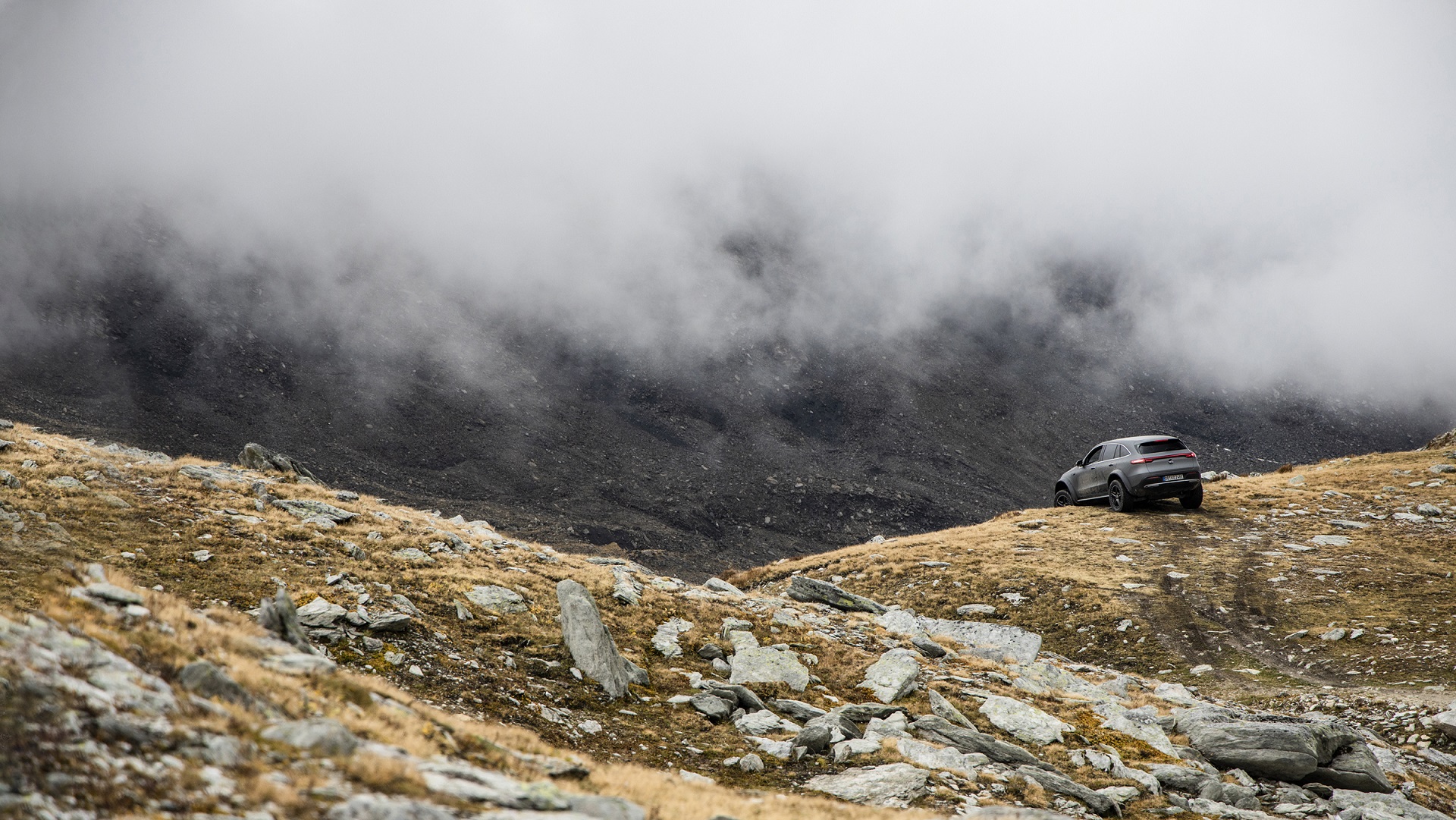
Anyway, dropped gearsets aren’t – in theory – that hard to fit. There are bolt-on variants available for most applications. Mercedes, on the other hand, did a proper job and made its own. Something harder than it sounds, because you have to adapt, tweak and lightly re-engineer all sorts of important components to get the thing to actually drive rather than lumber around like a drunken bison – especially because the car also rides around on 285/50 R20 wheels and tyres. A tread pattern like this, on 50-section tyres, is great when you avoid pavement, but supplies bouncy castle variables to the suspension kinematics.
Luckily, Mercedes set about this project with imaginative engineers who actually care about stuff – Jürgen Eberle and his team don’t do things by halves. But once you have it all pointing in the same direction, you end up with a car that’s pretty much unique: a pure electric luxury maxi off-roader that feels like a production car. In some cars, manners are a thin veneer over viciousness, but not here. Despite looking like it may soon overdose on its own testosterone, the EQC 4x4² is a bit of a pussycat.
Because other than the dangly bits, it’s ‘just’ an EQC. The interior is the same leather swaddled cave, all the driver aids work, there’s an 80kWh battery good for 200+ miles (320+km) of range (even set up like this), over 400bhp instantly available. And as well as being relatively practical – the electronics have been tweaked to make best use of the hardware in Off-Road+ mode – it feels like something you’d buy. In fact, driving it around on the road is tremendous fun. There’s a bit of tyre and axle roar and weird sense of itself from the elevated driving position, but the wide stance and generous rubber, plus that instant electric torque, mean that it’s a giant go-kart on a normal road. Satisfying though that is, it is also not really the car’s forté, hence the little plan to try something a bit different.
So why here? Well, adventures are necessarily closer to home at the moment, and the Col de Sommeiller is a pass in the Italian Cottian Alps on the western side of the Piedmont region, bound tight up against the border with France. And it is generously epic. Ascend from the small ski town of Bardoneccia up Mount Chaberton’s lower skirts, and you’ll find that the tarmac’d road soon disintegrates into gravel and rocky shale way before you reach Rochemolles. It’s not surprising – a lot of the roads in this vicinity are old World War 2 military accesses built to service forts designed to lob mortars over the border into France, and they have succumbed to the gentle caress of age.
Named after a chap called Germain Sommeiller (the engineer responsible for the Fréjus rail tunnel that starts at the bottom of the hill between Bardoneccia and Modane in France), the road wends its way up past the Lago di Rochemolles – a pretty alpine lake – via some mildly sketchy hairpins and some excellently scenic drags that coil themselves around the mountain right to the summit. A summit that is, if you take certain things into account, the highest point in Europe to which you can drive. Now, there are higher places you can drive a 4x4, but they’re only open for very specific events – the Col you can approach if you ask nicely at Bardoneccia region’s council and buy a permit.
It’s not particularly dangerous, apart from the fact that unmaintained bits have a regular habit of just sort of… falling off. The edges are unguarded, the trails narrow – make a particularly bad judgement, and you wouldn’t stop bouncing until you landed back in Bardoneccia – and there are also some more technical sections. But apart from that, it’s a fairly easy climb. A bit too easy in parts, which is why I took several detours to see if I could get the EQC into trouble, a tactic that soon bore the realisation that this particular EQC is as epic as the backdrop. In fact, I can’t think of a vehicle better suited to this foray into the mountains, whose clean, crisp air is scythed through my lungs, because electric suits the wild places.
The trouble with electricity is that many feel that there’s a remote, pragmatic gratification in its precision, a dead-eyed satisfaction. Speed without emotion, ability without connection, turning cars into white goods with the character of a dishwasher. But really, it just depends on the task at hand. Off-road, electricity is king. No, it wouldn’t be suited to long-range overlanding unless you were hauling a football field’s-worth of photovoltaics and were prepared to camp out farming sunshine every day, but let’s face it; most off-road forays are usually day trips. And for the actual mechanics of driving over obstacles away from tarmac, pure electric beats an internal combustion engine every single time.
The practical application works like this: off-road, on any kind of surface, torque is key. The application of that torque is critical; the more delicate you can be, the more control you have over the delivery, the better chance you have of not getting stuck. Electric cars provide torque without the need for rpm, and they can be managed down to the last microwatt – meaning that they can creep better than any car with an engine. Providing that you have a motor providing sufficient torque output for the weight it is trying to move, you’ll be able to get the best grip possible. And grip will equal forward motion.
I can’t think of a vehicle better suited to this foray into the mountains
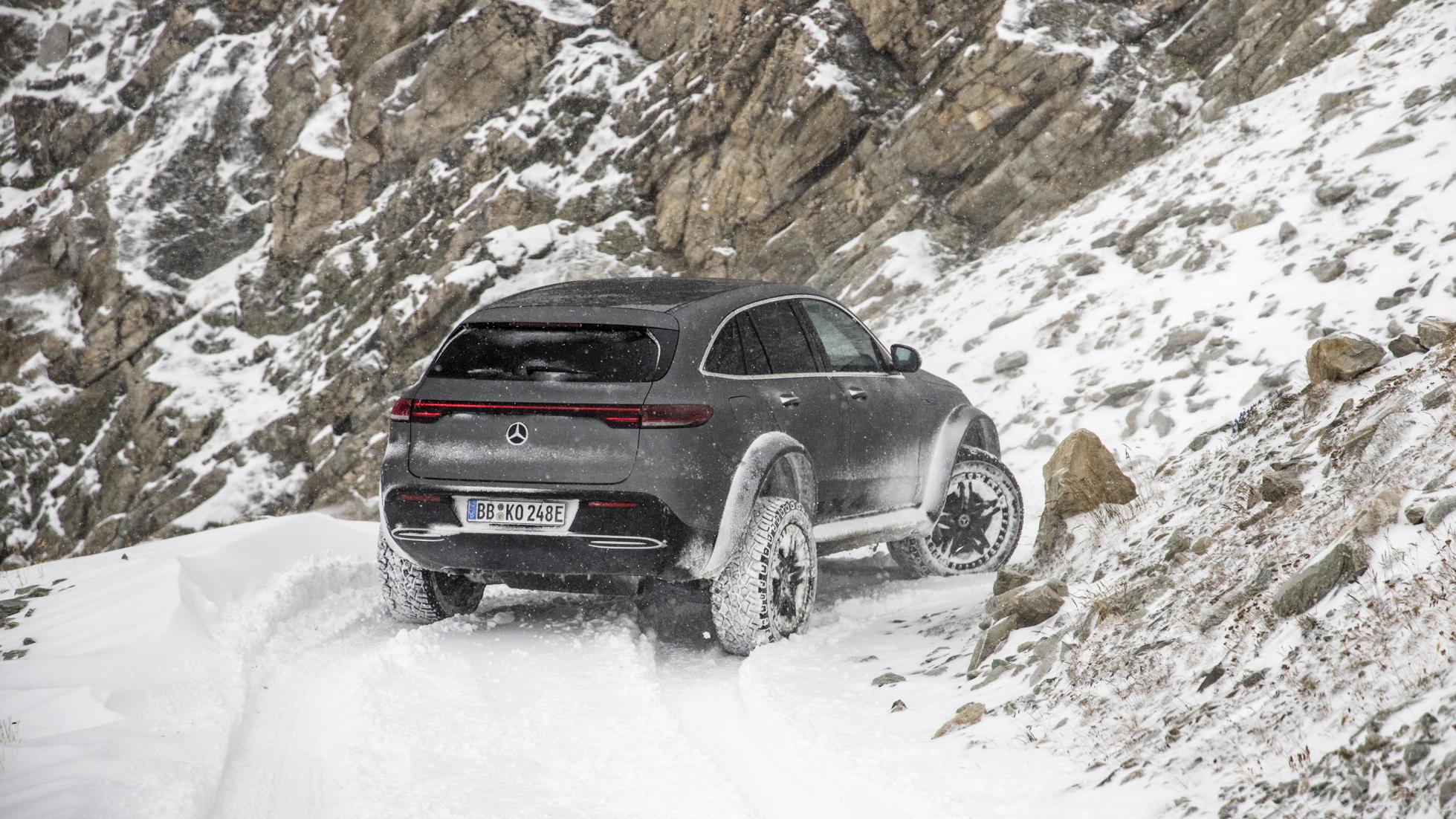
Once you add in the equally delicate control you can programme into an electric architecture, you can synthesise individual wheel control and torque splitting to whichever wheel has the most grip. And you don’t have to rely on a mechanical lock up – or a wheel actually spinning – to get to that point. The one thing I noticed about playing with the EQC 4x4² is that it didn’t tear up the trails. You can literally pick your way through an obstacle with minimum fuss, eking out traction with your metaphorical EV fingertips rather than bashing through them with your IC-engined fists.
And the best bit? You do so silently. You’d be surprised how much feedback being able to hear the terrain actually gives you – you can sense the crunch of rocks beneath your wheels, know when you’re about to spin. And you can also leave an EV hanging about at all sorts of silly angles for as long as you want: there are no fluids to pool in inconvenient places and start to starve components.
To prove the point, the EQC 4x4² bosses the terrain. Any terrain. All of the terrains; gravel, dirt, rocks, even snow… It hasn’t got diff locks or crawler gears – but it doesn’t need them. When cross-axled on lumps and ridges, it simply diverts drive away from the unloaded wheel and into the one that has purchase. Thus, it just sort of ambles over everything. No fuss, no roaring engine – just progress. The approach, breakover and departure angles are fabulous, the clearance exceptional.
No it hasn’t got very much axle articulation (something you’d usually appreciate in an off-roader), but it doesn’t particularly need it. True, it’s not short on width – and some of the trails on the Col are notably narrow and uncomfortably… sheer. But the turning circle is surprising, the ability to mountain goat itself around is unquestionable. The car glides us, serene and unruffled, right to the very top of a mountain, delivers us to views that mug your senses and rob your breath. And it does so silently, in harmony with its environment.
And the best bit? Having used precisely 50 per cent of the available range to get up here, I have discovered that serious off-road and regenerative braking is a comfortable pairing: it acts essentially like stop/start city traffic where an EV is most efficient. On the long wend downhill back toward Bardoneccia, we actually increase our range. Like magic. Is the EQC 4x4² the future of adventuring? Well, for short hops off-road you just can’t ignore how brilliant electric motivation really is.
The EQC 4x4² demonstrates how capable a vehicle like this could be, and makes you wonder what an electric G-Class – an EQG – could be like. Until then, it remains as a ‘maybe’ in Mercedes’ product plan, a unicorn. Which is a shame, because I’m starting to believe that silent, electric wild adventures are the future, and the EQC 4x4² is the exactly kind of unicorn that could deliver them.
Words: Tom Ford Photography: Florian Roser
This feature was created in 2020 in line with Covid guidelines


